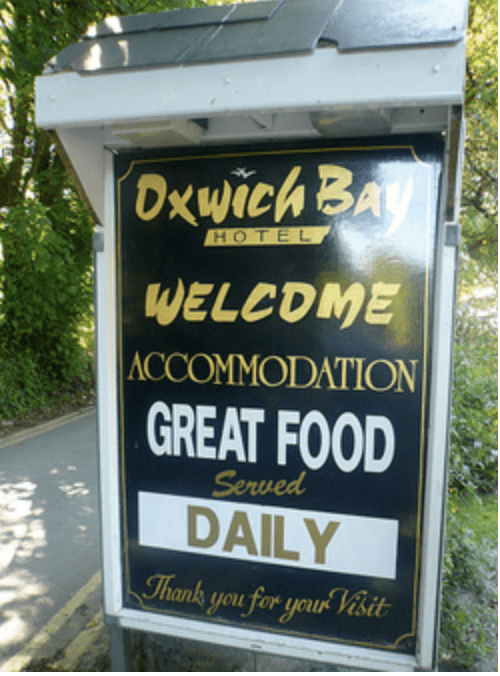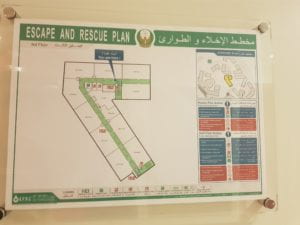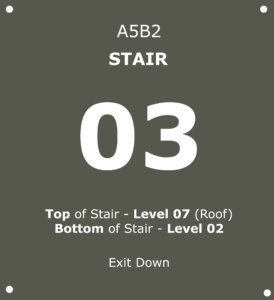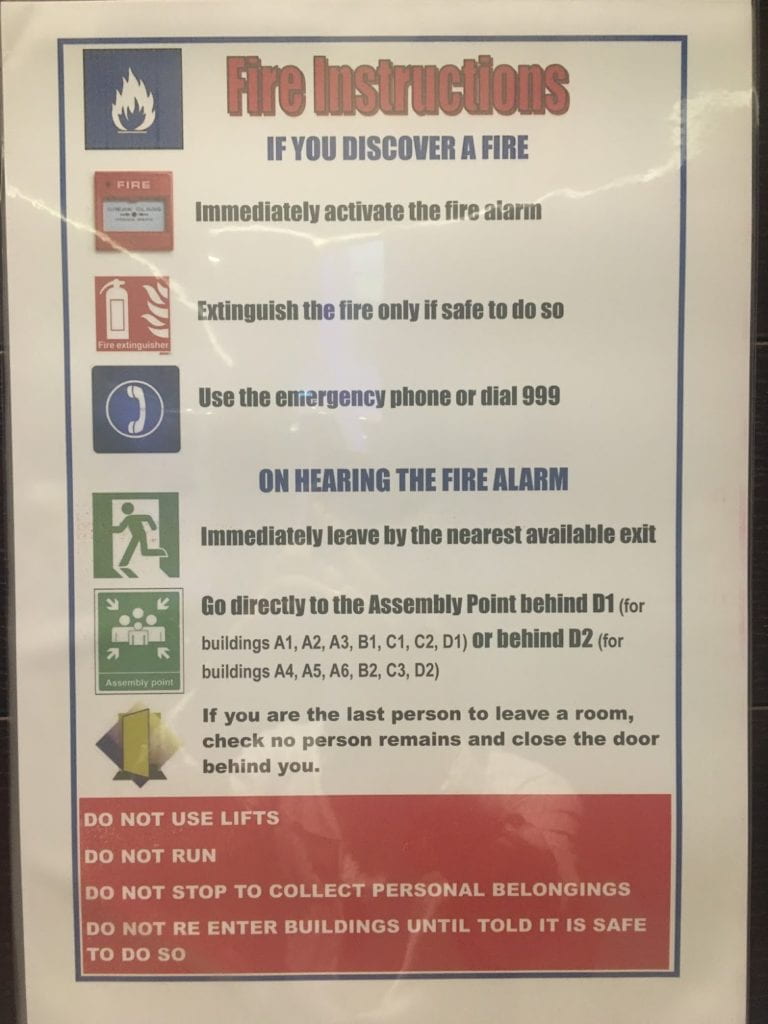Archives for May 2019
Protected: A preference that has not changed
Protected: Completing an incomplete typeface
Type Crime
The word “type crime” is often used to refer to a commonly committed typography design mistake that is often unaesthetic or makes the signage or poster unreadable. Though there are official laws for typography, the term “type crime” is often used in a humorous or colloquial setting. Not to be associated with “sign fails” which are always used to a humorous degree and are often not the result of typography mistakes but rather the purposeful or unpurposeful manipulation of letters in such a way that a foul, often sexual word is spelled out. Though type crimes aren’t a legitimate crime, the impacts of these typography mistakes are often highly prominent. They could lead to a multitude of issues such as misunderstandings, accidents or lack of attention to the text. Typographers have compiled a number of type crimes that have been labeled as “unforgivable.”
One of the biggest type crimes is the misuse of contrast. Especially when it comes to larger signs, the contrast is crucial in making sure the sign is understood and legible.

In this billboard, the lack of contrast between a yellow-brown background and a yellow font text makes it so that the text blends into the background. Ideally, the background is darker or a different hue so that there is greater contrast between the text and the background. Another is a lack of planning in spacing which again leads to bad readability.
An essential part of typography is kerning, that is, the spacing between letters. This example is quite tame compared to some of the more unfortunate accidents that occur with bad kerning. In this example, the letters ‘SA’ are much further from the letters ‘VINGS’ making it look like a separate word. Though in this example, it is evident what the word is supposed to be, in other signs it may not be so obvious.

Can you read the word Lagniappe? I didn’t think so. Another huge type crime is the use of illegible fonts. Because billboard and signs are often viewed either from far away or in a short amount of time, fonts that are too “fancy” or decorative are bad choices for signages.

In addition to font type, font size is also an important choice. Though the text on this example seems legible to us right now, it is because the image is still. However, as outlined on this billboard, most billboards are only seen for a short amount of time. As a result, billboards need larger fonts in order to assure legibility. Noting all these mistakes I will be critiquing a sign and providing a possible alternative in its design.

The sign that I chose commits all four of the aforementioned type crimes which contributes to its lack of appeal and illegibility. The first is of the absurd combination of serif, sans serif, decorative and calligraphic fonts into a singular sign. Each class of font is often used to a specific effect with calligraphic fonts usually have a hint of elegance and in contrast decorative fonts a sense of colloquialism and fun. Also, in contrast, serif fonts which are often used for academic writing and sans serif, which are often for more relaxed, less “uptight” pieces. This melting pot of font classes leaves the viewer without a sense of understanding of the aesthetic purpose of the sign. In other words, the typeface does not hint at the content. In addition, the kerning of the word “accommodation” makes it so that the word is not even legible because each of the letters is so close together. The sign, though the picture, seems to be placed by a road. If this is the case, this means that the font, due to its size would not be visible to oncoming drivers anyways especially with the calligraphic font. Finally, the lack of contrast between the gold colored font and the olive green background will make it so that the font is illegible

My poster redesign aims to address all of these type crimes. First I limit the type classes to decorative and sans serif. I use two because I consider the name of the hotel to be a “logo” of sorts and as a result should not have the same characteristics as the subtext, namely the details of the poster. Secondly, The word “accommodation” is no longer squished together and is more legible. Thirdly, I only use the more vibrant yellow in this poster in order to give a significant amount of contrast between the text and the background. Finally, I shift between white and yellow in order to provide emphasis on certain words and break monotony.
BIBLIOGRAPHY:
Rampton, John. “9 Common Signage Mistakes to Avoid.” Forbes, Forbes Magazine, 19 Oct. 2015, www.forbes.com/sites/johnrampton/2015/10/19/9-common-signage-mistakes-to-avoid/#4229fda063ae.
Type Crime

For our last blog post, we were told to find a wayfinding signage anywhere in Abu Dhabi with a ‘type crime’, explain, and suggest an alternative that will better serve the purpose. I wanted to explore this further outside of our campus, but project deadlines and final presentations all due in the same week restrained me from doing so. I walked around campus hoping to find a signage that I could write about, but they all seemed to do the job one way or the other; I would say that none of the escape and rescue plan seemed appealing and eye-catching however, due to the choice of colors and the layout of different elements, but the typography seemed to do the job. In the escape and rescue plan, sans-serif font was used which I believe was a good decision since the added elements in the strokes of the letters (serif) would have hindered the attention from the readers. Escape and Rescue Plan should really just be about displaying and naming the locations, and not about adding tones and mood through different typefaces. I also thought the labels of each locations in the building were way too small. The whole point of these safety/ escape plan signages is to help people at times of emergency, and making the font size too small to the point one can barely read the labels from a step away is extremely ineffective. While I had this analysis in my head, I thought about searching for signages that we often do not give much attention to but are crucial in wayfinding during emergency.
This assignment in particular gave me an opportunity to study all the signages around me with great detail and I decided to talk about the one I found by the stairs.

Sans-serif typeface- Gotham, was used, but I wanted to point out the alignment, kerning and the relative sizes that were problematic. First of all, the sizes. Sizes of fonts determine the hierarchy of information. In signages like this, I think it’s very important to bring the most important bit of the information forward and leave the less important parts behind. On the signage, Arabic and English are displayed with the same size, which isn’t wrong, but as you squint your eyes, you see a block of white blurb below the ‘03’. In case of emergencies like fire, it is crucial for people to distinguish the different languages on the signage in an instant so that they don’t spend their precious time trying to read Arabic instead of English from steps away in the smoke. To overcome this problem, adding a few lines of spacings in between the Arabic and English would have served its purpose better. However, I totally opt for the large, bold ‘03’ on the signage to help people notice it faster; after all, it’s the most important part of the information on the signage. In the beginning, I did feel that the ‘Top of Stair- Level 07 (Roof)’ and ‘Bottom of Stair- Level 02’ were unnecessary, but I feel that they are quite crucial as rescue teams can have a quick overview of the floor systems in the building (eg. No residents living on the top floor, and exit is on Level 02). Perhaps altering the weight of the texts could have done an effective job.
Secondly, the alignment. This isn’t the biggest problem with this signage, but I believe ‘A5B2’ could have been on a different line, perhaps right at the top of the signage. Having ‘A5B2’ right next to the STAIR is a bit bizarre to me (and it isn’t even aligned at the same line) but if it’s an absolute must, it would fit better right at the top. I would need some more explanations behind the design but if the stair itself is named STAIR A5B2, it would look better to have the words aligned in the middle, just like others.
The worst type-crime that this signage has committed is the kerning. Kerning indicates the relative spaces between the letters in typeface. On the signage, it’s pretty obvious to us that ‘STAIRA5B2’ is actually composed of two words- STAIR and A5B2. However, for people who are dyslexic, this can be a bit challenging since uneven spaces between letters can hinder their abilities to read. As mentioned before, although these signages don’t get the most attention on our campus, it is crucial to have the designs and layouts clear and simple so that people get the message they need without having to pay a lot of attention to the details.
If I were to redesign the signage, I would fix all of the problems mentioned. In terms of the typeface, I would still keep it to Gotham since it’s NYU’s typeface. Changing the typeface of an Escape and Rescue Plan would be reasonable, but I think the signage is still representative of the buildings that belong to NYU, so keeping the typeface to Gotham would be a better choice. If I absolutely had to choose a different typeface, I would go with Verdana since it’s a very legible sans-serif typeface and there is a greater contrast in the strokes in Verdana Bold than Gotham Bold.

+ I didn’t have the Arabic version of Verdana so I left it out of the redesigned signage. Compared to the original signage, I would say the redesigned version is definitely more legible and therefore putting an Arabic dedicated signage of the same layout next to the English maybe a solution but again, I’m not as skilled and experienced in wayfinding signages so I’m not sure if it will be the best solution. Nevertheless, the idea still remains the same; adding more lines of spacing between Arabic and English so they are more easily distinguishable and adjusting the alignment, position and relative sizes to highlight the hierarchy of information.
Type Crime Assignment: Fire Instructions Poster (edited for the fixed vers.)

Admittedly, finding a case of type crime in the NYUAD campus has been no easy task. Many official signages and panels has been designed meticulously with good typography in mind. Gotham, NYU’s official type specimen is used extensively and with weights and the surrounding design elements achieving harmonious clean look. The usage of simple and clean sans serif brought about neoteric and sharp appearance while successfully accommodating humane warmth and transparency. Most importantly, the extensive usage of well made design identity availed effective delivery of information; one of the most important features of typography.
However, when I was wandering about in the Art Center, I was captured with glee to see a informational poster committing the most heinous type crime I have witnessed yet in this campus. Worryingly enough, the poster was a instructional one, directing users of the Art Center on what to do in case of fire. There are multiple type crimes committed in this poster and none are forgivable, considering the poster is to provide essential informations in time of dire emergency. Such signages and placards are to be designed with extreme care; easiness to read and digest the most crucial directions is imperative. How beautiful and fitting the poster is of next importance. The poster I found fail in all of these aspects.
First, there is no uniformity of typography present in the poster. I suspect that four or five different style of types were used. The titular line “Fire Instructions” is written in Impact Bold Condensed with a black outline and shadows. “IF YOU DISCOVER A FIRE” and “ON HEARING THE FIRE ALARM” lines are using Impact. “Immediately activate the fire alarm” and following directions are using Impact Bold Condensed without shadow or outline this time. In the bottom half of the poster, in the middle of the direction written in Impact Bold Condensed, Arial pops up for absolutely no reason. The last direction before the red box I suppose is written in Arial Bold. The texts in the red box is written in Arial Bold but in all caps. Using different typefaces in a same work requires careful deliberation. There need to be a reason when a typeface is changed in the same work; otherwise, the piece looks messy and unpersuasive, as it does in this poster. The sudden change from using typefaces in the Impact family to those in the Arial family is not justifiable by any means. It happens mid-sentence and is kept for the remainder of the poster even when the informations presented are in the same category as other informations written in different typeface. The lack of uniformity and concern for reasons of sacrificing the uniformity are the first sin this poster commits.
Secondly, the typefaces used here are hardly appropriate for the delivery of informations present. The most heinous crime this poster commits perhaps is the usage of Impact Bold Condensed for the directions WHEN THERE IS A FIRE IN THE BUILDING. Impact Bold Condensed does catch attention with its thick strokes and blunt look but catching attention is all it can possibly do. The condensed look which resembles a tightly packed sardines in a can or the infamous rush hour L-train in New York City metro, is a cancer in terms of readability. The condensed style of the typeface is achieved by narrowing the general width of each characters and increasing the x-height, which sacrifices the length of ascenders and descenders. These measures have one function and one function only; it is good for the economy —the more letters you can cram in, the better. What it sacrifices for the efficiency of space, which can also be achieved by sea of other measures that does not come with such heavy caveat, is the readability. The tightness of the type combined with minimized ascenders and descenders results in a creation of ugly and intimidating blocks of text that not only is hard to read and comprehend but also makes anyone not want to look at them at all. Moreover, the usage of bold and condensed typeface which enlarges the width of the strokes in each characters makes the typeface more awkward when paired with other typefaces. Especially, typefaces with thin strokes and stems such as Arial, another typeface used in this poster, looks out of place when paired with condensed types.
The usage of the Arial itself should be reflected upon as well. According to Anthony Cahalan’s list of designer’s choice of typography, published in Mark Batty’s Typographic Papers Series, Arial was placed fourth in the least liked typefaces for designers (qtd. in Garfield, 2011). According to Mark Simonson, this “shameless imposter” of Helvetica’s wise usage is attributable not to its beauty but to “pervasiveness of Microsoft’s influence in the world. (Simonson, 2001)” Perhaps, the poster could have benefitted from using a typeface other than something developed as a cheap alternative of a typeface that was placed second in the same ranking.
One good thing in this poster perhaps is that the artist did put into consideration of using different weights following the hierarchy of information. The title of the poster, the titular line, is written with black outlines and shadows. The subtitles for the directions (“IF YOU DISCOVER A FIRE” and “ON HEARING THE FIRE ALARM”) are written in all caps compared to following directions. The descriptions for the buildings to assemble at are written in different typeface from the main directions, while the general directions in the bottom, which supposedly were decided as not necessarily conforming to the subcategories of all capped directions are presented in a red box. However, the hierarchy present here with usage of different weights and all caps is inconsistent and not helpful in the quick digestion of the informations present. The last direction in the second subcategory has no reason to be written in Arial unlike all the other directions and title’s outline and shadows only serve a decorational function and sacrifice not only the consistency of the poster but also the readability of the information. The descriptions for the location of the assembly point also commits the same sin; they are bad for the consistency and fails to effectively deliver the context of locations in terms of the direction.
For these reasons, this Fire Instructions poster I found in the Art Center fails to serve its function of delivering crucial informations effectively in an urgent situation, let alone fits with other beautiful and aesthetically pleasing signages present in this campus. If I were to redesign it, I would use typefaces such as Frutiger, a proven type for effective deliverance of informations all over the world, and make each typefaces conform to each other in terms of hierarchy, to achieve consistency and effective rendition of crucial substance.
For instance, I’d use something like this.

Notes:
Garfield, Simon. “The 8 Worst Fonts In The World”, FastCompany. 28 Oct. 2011
Simonson, Mark. “The Scourge of Arial”, Mark Simonson Studio. 21 Feb. 2001.